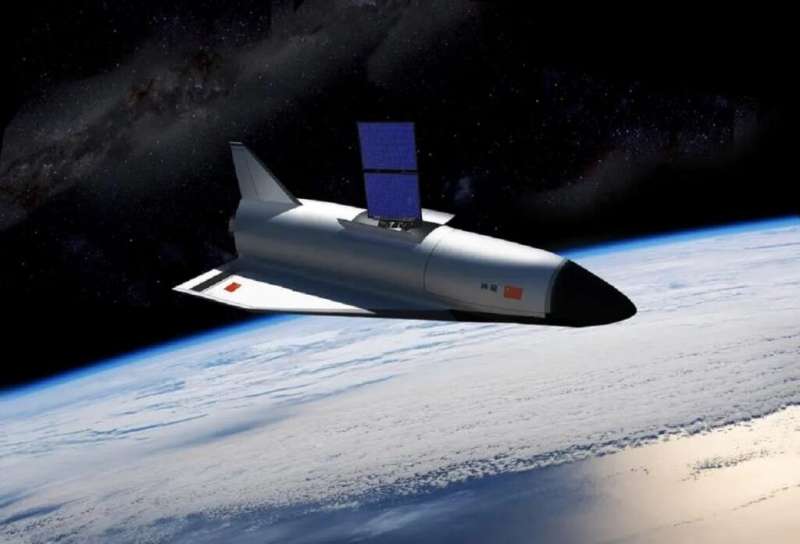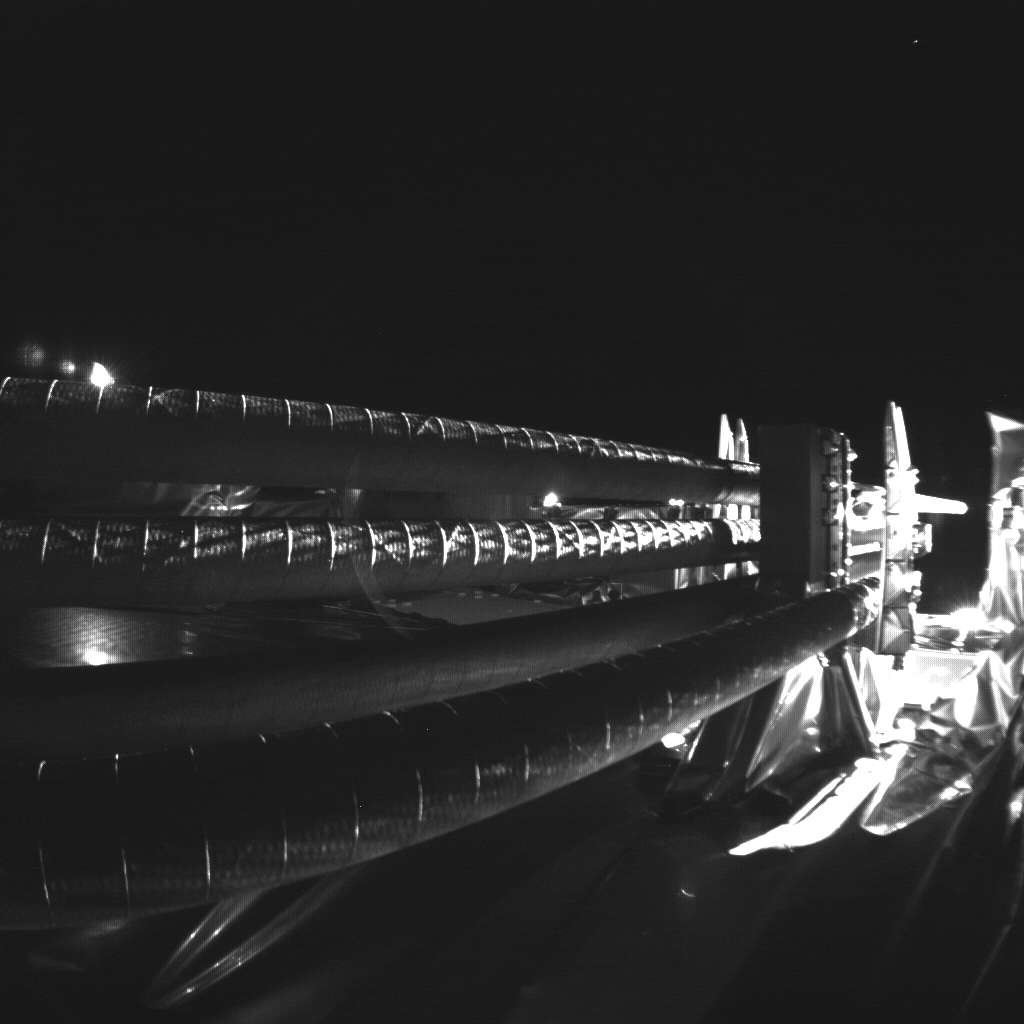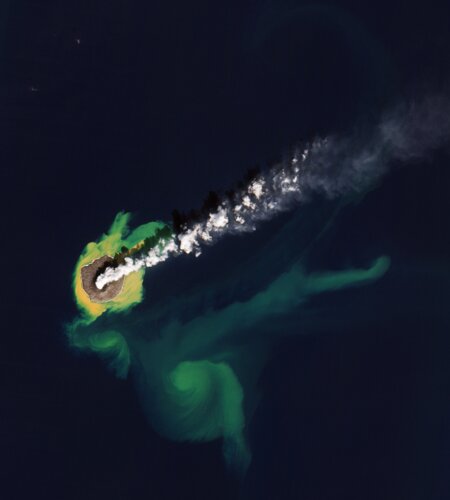Eutelsat eager for OneWeb uplift as broadcast sales plummet
Friday, 12 May 2023 18:29
A shrinking broadcast business led to another drop in revenues for Eutelsat as the French satellite operator edges closer to merging with OneWeb, the low Earth orbit constellation set to boost its shift into connectivity services.
China has its own secret space plane, and it just landed
Friday, 12 May 2023 16:55
A lot has changed since the last Space Age. Unlike the days of Sputnik, Vostok, Mercury, and Apollo, the current era is not defined by two superpowers constantly vying for dominance and one-upmanship. More than ever, international cooperation is the name of the game, with space agencies coming together to advance common exploration and science goals.
Similarly, there is the way the private space sector has become a major participant, providing everything from launch services and commercial payloads to satellite constellations and crews.
But in some ways, old habits die hard. Since the turn of the century, China has emerged as a major power in space, to the point of becoming a direct competitor with NASA's human space programs. For the past few years, China has been developing a reusable autonomous spaceplane to compete with the X-37B Orbital Test Vehicle (OTV).
Known as Shenlong ("divine dragon"), this spaceplane recently concluded its second test flight after spending 276 days in orbit.
Juice’s RIME antenna breaks free
Friday, 12 May 2023 15:27
More than three weeks after efforts began to deploy Juice’s ice-penetrating Radar for Icy Moons Exploration (RIME) antenna, the 16-metre-long boom has finally escaped its mounting bracket.
Europe's first lunar ‘lamb-bassador’
Friday, 12 May 2023 14:14
Last month, ESA’s woolly astronaut became Europe's first lunar ‘lamb-bassador’: Shaun the Sheep returned home from his Artemis I mission to a hero's welcome and then was herded off on a celebratory post-flight tour.
Op-ed | The dramatic influence of generative AI on the space industry
Friday, 12 May 2023 12:33
As we find ourselves amidst a tectonic technology shift, adopting AI systems will undoubtedly prove critical in protecting our national security and our space infrastructure.
Week in images: 08-12 May 2023
Friday, 12 May 2023 12:10
Week in images: 08-12 May 2023
Discover our week through the lens
First Intuitive Machine lunar lander mission slips to the third quarter
Friday, 12 May 2023 10:35
Intuitive Machines says its first lunar lander mission has slipped into the third quarter of this year as pursues a wider range of business opportunities.
SmartSat unveils CHORUS prototype terminal for faster, safer military communications
Friday, 12 May 2023 07:39 SmartSat Cooperative Research Centre (CRC), Australia's leading space research centre, has unveiled the Compact Hybrid Optical-RF User Segment (CHORUS) prototype terminal to create more stable and secured military satellite communications at the 15th Australian Space Forum.
Funded by SmartSat CRC, the world-leading technology embedded in this prototype has been entirely developed in Austra
SmartSat Cooperative Research Centre (CRC), Australia's leading space research centre, has unveiled the Compact Hybrid Optical-RF User Segment (CHORUS) prototype terminal to create more stable and secured military satellite communications at the 15th Australian Space Forum.
Funded by SmartSat CRC, the world-leading technology embedded in this prototype has been entirely developed in Austra SES and TESAT to develop payload for Europe's EAGLE-1 quantum cryptography satellite system
Friday, 12 May 2023 07:39 EAGLE-1 consortium lead SES announces a new key partner, TESAT, responsible for developing and integrating the Quantum Key Distribution (QKD) payload for the EAGLE-1 satellite. The SES and TESAT partnership is aimed at achieving the next key milestone in building and implementing Europe's pioneering quantum secure communications initiative EAGLE-1.
Supported by the European Space Agency (E
EAGLE-1 consortium lead SES announces a new key partner, TESAT, responsible for developing and integrating the Quantum Key Distribution (QKD) payload for the EAGLE-1 satellite. The SES and TESAT partnership is aimed at achieving the next key milestone in building and implementing Europe's pioneering quantum secure communications initiative EAGLE-1.
Supported by the European Space Agency (E Airbus selects UK National Satellite Test Facility for SKYNET 6A testing
Friday, 12 May 2023 07:39 Airbus has selected the National Satellite Test Facility (NSTF) at Harwell in Oxfordshire to carry out the comprehensive test campaign on the UK Ministry of Defence's next generation secure communications satellite SKYNET 6A.
The 116 million pound government-funded NSTF, operated by experts from the STFC RAL Space (Science and Technology Facilities Council), will carry out the SKYNET 6A te
Airbus has selected the National Satellite Test Facility (NSTF) at Harwell in Oxfordshire to carry out the comprehensive test campaign on the UK Ministry of Defence's next generation secure communications satellite SKYNET 6A.
The 116 million pound government-funded NSTF, operated by experts from the STFC RAL Space (Science and Technology Facilities Council), will carry out the SKYNET 6A te Researchers discover twisted fields around mysterious fast radio burst
Friday, 12 May 2023 07:39 Fast Radio Bursts (FRBs) are the brightest millisecond-duration cosmic explosions in radio bands. Their unknown origin poses challenges for astronomy as well as physics.
The Commensal Radio Astronomy FAST Survey (CRAFTS), a key program of the Five-hundred-meter Spherical radio Telescope (FAST), discovered the world's first persistently active repeating FRB, known as FRB 20190520B. Now this
Fast Radio Bursts (FRBs) are the brightest millisecond-duration cosmic explosions in radio bands. Their unknown origin poses challenges for astronomy as well as physics.
The Commensal Radio Astronomy FAST Survey (CRAFTS), a key program of the Five-hundred-meter Spherical radio Telescope (FAST), discovered the world's first persistently active repeating FRB, known as FRB 20190520B. Now this Ariane 6 joint update report, 12 May 2023
Friday, 12 May 2023 07:30
The Ariane 6 Launcher Task Force consists of top management of ESA, launch base prime contractor CNES, launcher system prime contractor ArianeGroup and launch service provider Arianespace. This regular update will follow Task Force meetings, to report on the progress being made towards inaugural flight of the new Ariane 6 launcher.
The next update is expected on or soon after 8 June.
Earth from Space: Nishinoshima island, Japan
Friday, 12 May 2023 07:00 Image:
This Copernicus Sentinel-2 image features the Japanese island of Nishinoshima, in the northwest Pacific Ocean.
Image:
This Copernicus Sentinel-2 image features the Japanese island of Nishinoshima, in the northwest Pacific Ocean. USAF awards contract to Above: Orbital and Ascent Solar for on-orbit PV production
Friday, 12 May 2023 02:56 Above: Orbital, Inc. has been awarded a significant contract from the United States Air Force for On-orbit Manufacturing of Thin-Film Solar Photovoltaics in partnership with Ascent Solar Technologies, Inc. (NASDAQ: ASTI), the leading U.S. innovator in the design and manufacture of featherweight, flexible, and durable CIGS thin-film photovoltaic (PV) solutions.
The Small Business Innovation
Above: Orbital, Inc. has been awarded a significant contract from the United States Air Force for On-orbit Manufacturing of Thin-Film Solar Photovoltaics in partnership with Ascent Solar Technologies, Inc. (NASDAQ: ASTI), the leading U.S. innovator in the design and manufacture of featherweight, flexible, and durable CIGS thin-film photovoltaic (PV) solutions.
The Small Business Innovation Sidus Space selected by OneWeb to manufacture satellite hardware
Friday, 12 May 2023 02:56 Sidus Space, Inc. (NASDAQ:SIDU), a leading provider of machined parts to the global space industry, has been selected by Airbus OneWeb Satellites, LLC (AOS) to design and build machined parts. The machined parts will be integrated into the portfolio of Arrow commercial small satellites manufactured by AOS.
Airbus OneWeb Satellites LLC is a joint venture between Airbus and OneWeb. AOS manuf
Sidus Space, Inc. (NASDAQ:SIDU), a leading provider of machined parts to the global space industry, has been selected by Airbus OneWeb Satellites, LLC (AOS) to design and build machined parts. The machined parts will be integrated into the portfolio of Arrow commercial small satellites manufactured by AOS.
Airbus OneWeb Satellites LLC is a joint venture between Airbus and OneWeb. AOS manuf 
